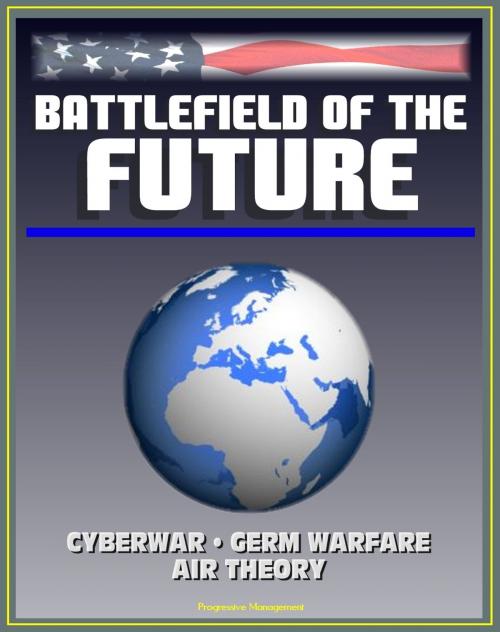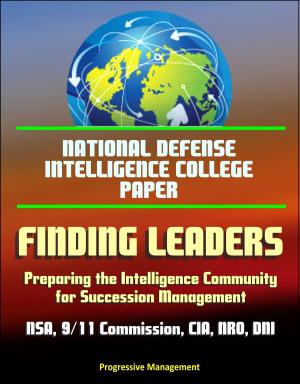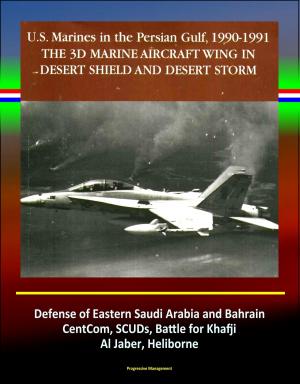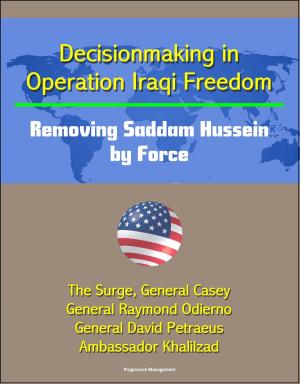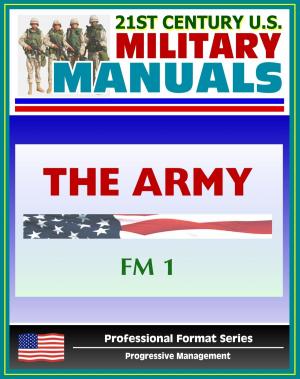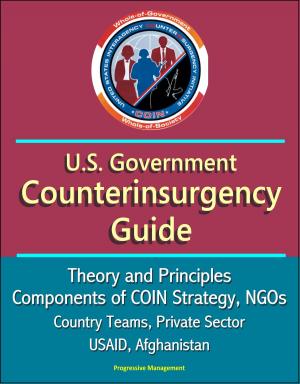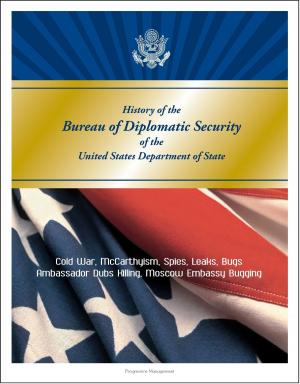Battlefield of the Future: 21st Century Warfare Issues - Air Theory for the 21st Century, Cyberwar, Biological Weapons and Germ Warfare, New-Era Warfare
Nonfiction, History, Military, Biological & Chemical Warfare| Author: | Progressive Management | ISBN: | 9781476058603 |
| Publisher: | Progressive Management | Publication: | June 6, 2012 |
| Imprint: | Smashwords Edition | Language: | English |
| Author: | Progressive Management |
| ISBN: | 9781476058603 |
| Publisher: | Progressive Management |
| Publication: | June 6, 2012 |
| Imprint: | Smashwords Edition |
| Language: | English |
This is a book about strategy and war fighting in the midst of a revolution in military affairs as the world moves into the twenty-first century. Its 11 essays examine topics such as military operations against a well-armed rogue state or NASTT (NBC-arming sponsor of terrorism and intervention) state; the potential of parallel warfare strategy for different kinds of states; the revolutionary potential of information warfare; the lethal possibilities of biological warfare; and the elements of an ongoing revolution in military affairs (RMA).
The book's purpose is to focus attention on the operational problems, enemy strategies, and threats that will confront US national security decision makers in the twenty-first century. The participating authors are either professional military officers or civilian professionals who specialize in national security issues. Two of the architects of the US air campaign in the 1991 Gulf War have contributed essays that discuss the evolving utility of airpower to achieve decisive results and the lessons that might portend for the future of warfare.
In "Principles of War on the Battlefield of the Future," which sets the tone for the book, Dr. Barry Schneider examines how traditional principles of war may have to be reassessed in light of a proliferation of weapons of mass destruction (WMD) among third world states. Regarding the principle of "mass," traditional theory dictated that forces be massed for an offensive breakthrough. But Schneider argues that, against an enemy armed with WMD, dispersed of one's forces may, in fact, be more prudent, and fighting by means of "disengaged combat" prior to a decisive strike may be necessary. This requires high coordination and "superior targeting and damage assessment intelligence, combined with superior high-tech weapons." Still, the United States and its allies would not likely be able to dominate a future battlefield even with advanced conventional arms if they did not have close-in air bases to operate from and thereby to achieve air dominance over the battle space. Therefore, while it sounds good, striking from outside the enemy's range is not a real option for long if the enemy is mounting a ground campaign that is closing in on vital areas. Local air, sea, and ground power will be needed to contain the adversary forces and roll them back. This means local air bases and seaports must be available and protected.
Contents * Introduction * 1 Principles of War for the Battlefield of the Future * Barry R. Schneider * Overview: New Era Warfare? A Revolution In Military Affairs? * 2 New-Era Warfare * Gen Charles A. Horner, USAF, (Ret.) * 3 The Revolution in Military Affairs * Jeffrey McKitrick, James Blackwell, Fred Littlepage, George Kraus, Richard Blanchfield and Dale Hill * Overview: Future Airpower and Strategy Issues * 4 Air Theory for the Twenty-First Century * Col John A. Warden III, USAF * 5 Parallel War and Hyperwar: Is Every Want a Weakness? * Col Richard Szafranski, USAF * Overview: Information Warfare Issues * 6 Information War - Cyberwar - Netwar * George Stein * 7 Information Warfare: Impacts and Concerns * Col James W. McLendon, USAF * Overview: Biological Warfare Issues * 8 The Biological Weapon: A Poor Nation's Weapon of Mass Destruction * Lt Col Terry N. Mayer, USAF * 9 Twenty-First Century Germ Warfare * Lt Col Robert P. Kadlec, MD, USAF * 10 Biological Weapons for Waging Economic Warfare * Lt Col Robert P. Kadlec, MD, USAF * 11 On Twenty-First Century Warfare * Lawrence E. Grinter and Dr. Barry R. Schneider
This is a book about strategy and war fighting in the midst of a revolution in military affairs as the world moves into the twenty-first century. Its 11 essays examine topics such as military operations against a well-armed rogue state or NASTT (NBC-arming sponsor of terrorism and intervention) state; the potential of parallel warfare strategy for different kinds of states; the revolutionary potential of information warfare; the lethal possibilities of biological warfare; and the elements of an ongoing revolution in military affairs (RMA).
The book's purpose is to focus attention on the operational problems, enemy strategies, and threats that will confront US national security decision makers in the twenty-first century. The participating authors are either professional military officers or civilian professionals who specialize in national security issues. Two of the architects of the US air campaign in the 1991 Gulf War have contributed essays that discuss the evolving utility of airpower to achieve decisive results and the lessons that might portend for the future of warfare.
In "Principles of War on the Battlefield of the Future," which sets the tone for the book, Dr. Barry Schneider examines how traditional principles of war may have to be reassessed in light of a proliferation of weapons of mass destruction (WMD) among third world states. Regarding the principle of "mass," traditional theory dictated that forces be massed for an offensive breakthrough. But Schneider argues that, against an enemy armed with WMD, dispersed of one's forces may, in fact, be more prudent, and fighting by means of "disengaged combat" prior to a decisive strike may be necessary. This requires high coordination and "superior targeting and damage assessment intelligence, combined with superior high-tech weapons." Still, the United States and its allies would not likely be able to dominate a future battlefield even with advanced conventional arms if they did not have close-in air bases to operate from and thereby to achieve air dominance over the battle space. Therefore, while it sounds good, striking from outside the enemy's range is not a real option for long if the enemy is mounting a ground campaign that is closing in on vital areas. Local air, sea, and ground power will be needed to contain the adversary forces and roll them back. This means local air bases and seaports must be available and protected.
Contents * Introduction * 1 Principles of War for the Battlefield of the Future * Barry R. Schneider * Overview: New Era Warfare? A Revolution In Military Affairs? * 2 New-Era Warfare * Gen Charles A. Horner, USAF, (Ret.) * 3 The Revolution in Military Affairs * Jeffrey McKitrick, James Blackwell, Fred Littlepage, George Kraus, Richard Blanchfield and Dale Hill * Overview: Future Airpower and Strategy Issues * 4 Air Theory for the Twenty-First Century * Col John A. Warden III, USAF * 5 Parallel War and Hyperwar: Is Every Want a Weakness? * Col Richard Szafranski, USAF * Overview: Information Warfare Issues * 6 Information War - Cyberwar - Netwar * George Stein * 7 Information Warfare: Impacts and Concerns * Col James W. McLendon, USAF * Overview: Biological Warfare Issues * 8 The Biological Weapon: A Poor Nation's Weapon of Mass Destruction * Lt Col Terry N. Mayer, USAF * 9 Twenty-First Century Germ Warfare * Lt Col Robert P. Kadlec, MD, USAF * 10 Biological Weapons for Waging Economic Warfare * Lt Col Robert P. Kadlec, MD, USAF * 11 On Twenty-First Century Warfare * Lawrence E. Grinter and Dr. Barry R. Schneider
